Loxidol 15 mg / 1.5 ml 3’s solution for injection in ampoules
$15.20
Description
The instruction for medical use of LOKSIDOL medicine the Trade name Loksidol Mezhdunarodnoye the unlicensed name Meloksikam Lekarstvennaya a form Solution for injections Structure One ampoule of drug contains active agent – to meloksika of 15 mg, excipients: meglumin, glikofurol, half-oxameasures 188, glycine, sodium chloride, sodium hydroxide, water for injections. Description Transparent light yellow solution Pharmacotherapeutic group Non-steroidal anti-inflammatory drugs. Oksikama. Meloksikam. The ATX M01AC06 code the Pharmacological Meloksikam Pharmacokinetics properties is completely absorbed after intramuscular introduction. The relative bioavailability in comparison with bioavailability at intake is nearly 100%. Therefore upon transition from a dose, injection on oral forms of selection, it is not required. After introduction of 15 mg of drug intramusculary the peak concentration in plasma making 1.6-1.8 mkg/ml is reached in 60-96 min. Distribution. Meloksikam intensively contacts proteins of plasma, especially albumine (99%). Gets into synovial fluid where concentration makes him about 50% of concentration in plasma. Distribution volume low, averages 11 l, individual distinctions are 7 – 20%. Biotransformation. Meloksikam is exposed to considerable biotransformation in a liver. In urine four various metabolites inactive in the pharmakodinamichesky relation are defined. The main metabolite (5 ‘-karboksimeloksikam (60% of dose size)) is formed by oxidation of an intermediate metabolite (5 ‘-hydroksimetilmeloksikama (9% of dose size)). Peroxidase takes part in formation of two other metabolites making 16% and 4% of drug dose size probably. Removal. Meloksikam is brought equally through intestines and kidneys, in not changed look – 5% of a daily dose through intestines, in urine in not changed look drug is found only in trace quantities. Elimination half-life varies from 13 to 25 hours after introduction. The general plasma clearance is 7-12 ml/min. Linearity/nonlinearity of pharmacokinetics. Meloksikam shows linear pharmacokinetics in doses of 7.5 mg – 15 mg at intake or intramuscular introduction. Pharmacokinetics at special groups of patients the Renal/liver failure the Liver failure and also a renal failure from easy to moderate severity of significant effect on pharmacokinetics of a meloksikam do not render. In a terminal renal failure the increase in volume of distribution can lead to increase in concentration free meloksikam. Elderly people Elderly men have the pharmacokinetic parameters similar to parameters of young men. Elderly women have higher AUC values and longer elimination half-life in comparison with patients of young age. A pharmacodynamics Loksidol – non-steroidal anti-inflammatory drug (NPVP) from a class of enolovy acid, the having anti-inflammatory, soothing and febrifugal effect. The mechanism of above-mentioned effects consists in Loksidol’s ability to inhibit biosynthesis of prostaglandins which are inflammation mediators. The mechanism of action is connected with mainly selection inhibition of cyclooxygenase-2 (TsOG-2) – the specific enzyme participating in development of processes of inflammation. It is considered that the inhibition of TsOG-2 provides therapeutic effect of NPVP whereas the inhibition of constantly present isoenzyme of TsOG-1 can be the cause of side effects from a stomach and kidneys. The selectivity of a meloksikam concerning TsOG-2 is confirmed in various test systems, both in vitro, and in vivo. Frequency of perforation in upper parts of a GIT, ulcers and bleedings which contacted use of a meloksikam was low and depended on drug dose size. Indications initial stage of treatment and short-term symptomatic therapy: – a pain syndrome in an osteoarthritis (arthrosis, a degenerative disease of joints) – a pseudorheumatism – an ankylosing spondylarthritis the Route of administration and doses Intramuscular introduction of Loksidol is shown only during the first several days of treatment (from 3 to 5 days depending on weight of a state). For the subsequent treatment it is necessary to take a pill. Probability of undesirable reactions increases together with a dose and duration of influence therefore it is necessary to use the smallest possible duration and the minimum effective daily dose. The general daily dose of Loksidol should be accepted once. The maximum recommended daily dose of Loksidol irrespective of a form of release makes 15 mg. A pain syndrome in an osteoarthritis: 7.5 mg/days. If necessary it is possible to increase a dose to 15 mg/days. Pseudorheumatism: 15 mg/days. According to therapeutic reaction it is possible to reduce a dose to 7.5 mg/days. Ankylosing spondylarthritis: 15 mg/days. According to therapeutic reaction it is possible to reduce a dose to 7.5 mg/days. Special groups of patients. At patients with the increased risk of development of undesirable reactions, for example, gastrointestinal diseases or risk factors for cardiovascular diseases, treatment it is necessary to begin 7.5 mg/days in a dose. At insignificant or moderate depression of function of kidneys (the clearance of creatinine is reduced no more than by 25 ml/min. from norm) the dose decline is not required. To the patients with heavy renal failures who are not on a hemodialysis, Loksidol is contraindicated. The maximum daily dose Loksidol in ampoules at the patients with a heavy renal failure who are on a hemodialysis should not exceed 7.5 mg. The initial dose at patients with the increased risk of side effects makes 7.5 mg/days. Loksidol’s introduction is carried out by deep intramuscular injections. Intravenous administration of the drug Loksidola is forbidden. Considering possible incompatibility, contents of ampoules should not be mixed in one syringe with other medicines! Side effects the Undesirable phenomena are given below with use of the following classification: very often ≥ 1/10, it is frequent ≥1/100 to & lt, 1/10, is not frequent ≥1/1000 to & lt, 1/100, is rare ≥1/10000 to & lt, 1/1000, also lt, 10000 is very rare, it is not known – cannot be defined from available data. Disorders of blood and lymphatic systems Infrequently: – anemia Seldom: – change of a blood count (including change of a leukocytic formula), a leukopenia, thrombocytopenia – a cytopenia (at simultaneous use of potentially myelotoxic medicines, in particular a methotrexate) Disorders of the immune system Infrequently: – other reactions of immediate hypersensitivity it is rare: – acute anaphylaxis, anaphylactic reactions, anaphylactoid reactions Psychiatric disorders Seldom: – change of mood Is unknown: – confusion of consciousness, disturbance of orientation of Disorder of nervous system It is frequent: – a headache It is unknown: – dizziness – drowsiness Ophthalmologic disorders Seldom: – conjunctivitis, disorder of vision, including. illegibility of sight Rasstroystva of organs of hearing Infrequently: – dizziness Is rare: – sonitus Cardiac disorders Seldom: – heartbeat Vascular disorders Infrequently: – increase in arterial blood pressure, feeling of rush of blood to the person Rasstroystva of respiratory organs Is rare: – acute development of bronchial asthma (at patients with an allergy to acetylsalicylic acid or other NPVP) Gastrointestinal disorders Often: – abdominal pain, dyspepsia, diarrhea, nausea, vomiting Infrequently: – the concealed or obvious gastrointestinal hemorrhage, gastritis – a constipation, a meteorism, an eructation, stomatitis Seldom: – gastroduodenal ulcer, colitis, esophagitis Very seldom: – perforation of digestive tract (the lethal outcome is possible) Rasstroystva of a gepatobiliarny system Infrequently: – passing changes of indicators of function of a liver (for example, increase in activity of transaminases or bilirubin) It is very rare: – hepatitis Dermatological disorders Infrequently: – itching, angioedema Seldom: – toxic epidermal necrolysis, Stephens-Johnson’s syndrome, small tortoiseshell Very seldom: – bullous dermatitis, a multiformny erythema, rash It is unknown: – photosensitization Rasstroystva of an urinogenital system Infrequently: – changes of indicators of function of kidneys (increase in level of creatinine and/or urea in blood serum) It is very rare: – an acute renal failure – difficulty at urination, a sharp ischuria Rasstroystva from a reproductive system: It is unknown: – female infertility, ovulation delay General disorders and local reactions Often: – puffiness in the injection site, painful feelings in the injection site Infrequently: – Contraindication hypostases – hypersensitivity to a meloksikam or any other component of drug – symptoms of asthma, nasal polyps, a Quincke’s disease or small tortoiseshell when sharing acetylsalicylic acid or other NPVP in the anamnesis – perioperatsionny pain in the field of installation of a transplant for shunting of a coronary artery (TSKA) – erosive and ulcer changes mucous a stomach and duodenum/perforation in a phase of aggravation or recently postponed – acute inflammatory bowel diseases (nonspecific ulcer colitis in an aggravation phase, Crohn’s disease) – a heavy liver failure – a heavy renal failure (if the hemodialysis is not carried out) – ulcer gastrointestinal bleeding, recently postponed cerebrovascular bleeding or other hemorrhagic diseases – dekompensirovanny heart failure – a concomitant use of anticoagulants, considering possible risk of developing an intramuscular hematoma – pregnancy, breastfeeding – children’s and teenage age up to 18 years Medicinal interactions – Other inhibitors of synthesis of prostaglandins (ISP), including corticosteroids or salicylates (acetylsalicylic acid): co-administration of ISP is not recommended as synergy interaction can increase risk of development of an ulceration or gastrointestinal bleeding. – Oral anticoagulants, heparin, trombolitik: the increased risk of developing bleeding. If it is not possible to avoid joint prescribing of drugs, it is necessary to control carefully effect of anticoagulants on coagulation. – Antiagreganta and selective serotonin reuptake inhibitors (SSRI): the increased risk of developing bleeding because of depression of function of thrombocytes. – Lithium: it was reported that NPVP increase lithium level in blood plasma. Co-administration is not recommended. If it is not possible to avoid combined use, it is necessary to determine lithium level in plasma at the beginning and the end of treatment and also after change of a dose of Loksidol. – Methotrexate: NPVP reduce canalicular secretion of a methotrexate, thereby increasing concentration of a methotrexate in plasma. For this reason for the patients accepting a methotrexate in high doses (more than 15 mg/week), the accompanying use of NPVP is not recommended. The risk of interaction of NPVP and methotrexate should be considered also at the patients accepting a methotrexate in low doses, especially at patients with renal failures. In case of need the combined treatment it is necessary to control a blood count and function of kidneys. It is necessary to show care at joint reception of NPVP and methotrexate within 3 days when methotrexate level in plasma can increase and lead to strengthening of toxicity. – Contraception: there are messages that NPVP reduce efficiency of intrauterine contraceptives. – Diuretics: at treatment of NPVP there is potentiality of development of an acute renal failure in patients with dehydration. The patients accepting Loksidol in combination with diuretics have to receive enough liquid, it is necessary to check function of kidneys before therapy by Loksidol. – Antihypertensive drugs (e.g., beta-blockers, inhibitors of angiotensin-converting enzyme [APF], vazodilatator, diuretics): during treatment of NPVP the decrease in efficiency of antihypertensive drugs owing to blocking of prostaglandins-vazodilatatorov was noted – Combined use of NPVP and antagonists of receptors of angiotensin II (also as well as APF inhibitors) enhances effect of decrease in glomerular filtration. At patients with a renal failure it can lead to development of an acute renal failure – Holestiramin connects to meloksika in digestive tract that leads to the accelerated removal of drug from an organism – Cyclosporines: NPVP can increase indirectly through renal prostaglandins nephrotoxicity of cyclosporines. During joint prescribing of these drugs it is necessary to exercise control of function of kidneys – Pemetreksed: For the accompanying use of a meloksikam with pemetreksedy at patients with clearance of creatinine from 45 to 79 ml/min. the reception of a meloksikam should be suspended in 5 days prior to reception, in day of reception and in 2 days after reception of a pemetreksed. If the combination of a meloksikam with pemetreksedy is necessary, patients should be controlled carefully, especially regarding myelosuppression and gastrointestinal undesirable reactions. Patients with clearance of creatinine have lower than 45 ml/min. the accompanying use of a meloksikam with pemetreksedy is not recommended. – Meloksikam is almost completely brought due to metabolism in a liver which approximately on two thirds is mediated by enzymes of P450 cytochrome (CYP) (the main way of CYP 2C9 and a minor way of CYP 3A4) and to one third – other ways, for example, by peroksidazny oxidation. It is necessary to take into account a possibility of the pharmacokinetic interactions at simultaneous introduction of a meloksikam and drugs which are obviously inhibiting or the metabolized CYP 2C9 and/or CYP 3A4. The interaction mediated by CYP 2C9 can be expected in a combination with such medicines as oral anti-diabetic drugs (sulphonylurea derivatives, nateglinid), this interaction can lead to increase in level of these drugs and a meloksikama in plasma. The patients accepting to meloksika and drugs of sulphonylurea or nateglinid should be controlled carefully regarding a hypoglycemia. No pharmacokinetic medicinal interactions were revealed at co-administration of a meloksikam and antacids, Cimetidinum, digoxin, furosemide. Special instructions Loksidol in ampoules is not intended for intravenous administration! As well as at use of other NPVP, at treatment there can be potentially fatal gastrointestinal bleeding, an ulceration or perforation as with existence of alarming symptoms or serious gastrointestinal violations in the anamnesis at any time, and without them. Consequences of such disturbances, as a rule, are more serious at elderly people. It is necessary to show care at treatment of patients with a gastrointestinal disease in the anamnesis. It is necessary to control patients with gastrointestinal symptoms. Loksidol it is necessary to cancel when developing a round ulcer or gastrointestinal bleeding. Due to Loksidol’s use it was occasionally reported about serious skin reactions (some of which were led to death), including exfoliative dermatitis, Stephens-Johnson’s syndrome and a toxic epidermal necrolysis. The greatest risk of these reactions at patients, apparently, takes place at the beginning of therapy, and in most cases reaction is shown within the first month of treatment. Loksidol’s reception should be stopped at the first appearance of skin rash, defeats mucous or any other sign of hypersensitivity. NPVP can increase risk of developing serious cardiovascular trombotichesky diseases, a myocardial infarction and stroke which can lead to death. This risk can increase together with therapy duration. Patients with cardiovascular diseases or risk factors of cardiovascular diseases can be exposed to bigger risk. NPVP inhibit synthesis of prostaglandins of kidneys which play a supporting role in maintenance of a blood-groove in kidneys. With the lowered renal blood-groove and volume of blood the introduction of NPVP can cause the expressed renal decompensation in patients, at the termination of therapy of NPVP the function of kidneys is usually restored to an initial state. Elderly l
of di, patients with dehydration, with stagnant heart failure, cirrhosis, a nephrotic syndrome and the profound disease of kidneys, the patients receiving the accompanying treatment using diuretics, APF inhibitors or antagonists of a receptor of angiotensin II or the patients who were exposed to the extensive surgery which led to a hypovolemia are subject to the greatest risk. At such patients in an initiation of treatment it is necessary to control carefully functions of kidneys, including diuresis volume. In rare instances NPVP can cause interstitial nephrite, a glomerulonephritis, medullary necrosis of kidneys or a nephrotic syndrome. Loksidol’s dose at the patients with an end-stage of a renal failure who are on a hemodialysis should not exceed 7.5 mg. For patients with slight and moderate renal failures (i.e. patients with clearance of creatinine have more than 25 ml/min.) the dose decline is not required. As well as at use of other NPVP, increase in level of transaminases in serum of blood or other parameters of function of a liver is sometimes noted. In most cases these effects represented the slight taking place increase of parameters above normal values. If such anomaly is considerable or resistant, Loksidol’s reception it is necessary to stop and perform necessary examination of the patient with the subsequent observation. For patients with clinically stable cirrhosis the dose decline is not required. The painful or weakened patients can worse transfer side effects, in this case careful control is necessary. As well as at use of other NPVP, it is necessary to show care at treatment of elderly patients who more likely suffer from a renal failure, a liver or heart. NPVP can cause a delay of sodium, potassium and water and to prevent natriuretic effect of diuretics. As a result at the patients subject to these effects, heart failure or hypertensia can amplify or become aggravated. For patients of risk group the clinical monitoring is recommended. Meloksikam, as well as any other NPVP, can mask symptoms of the basic infectious disease. Fertility, pregnancy and period of a lactation Fertility. Use of a meloksikam, as well as any drug inhibiting cyclooxygenase/synthesis of prostaglandins can affect reproductive ability and is not recommended to the women planning pregnancy. Thus, for women who have difficulties with conception or are exposed to researches in connection with infertility, it is necessary to consider cancellation of reception of a meloksikam. Pregnancy. Loksidol is contraindicated during pregnancy. The inhibition of synthesis of prostaglandins can negatively affect pregnancy and/or development of an embryo and fruit. Data of epidemiological researches indicate the increased risk of an abortion, heart diseases and a gastroshizis after intake of inhibitors of synthesis of prostaglandins in the early stages of pregnancy. During the third trimester of pregnancy all inhibitors of synthesis of prostaglandins can subject a fruit: – to cardiopulmonary toxicity (with premature closing of a botallov of a channel and pulmonary hypertensia) – to a renal failure which can progress to a renal failure with an oligoamnios, mother and a fruit at the end of pregnancy: – to possible increase in a bleeding time, effect of anti-aggregation which can arise even at very low doses – to the suppression of reductions of a uterus leading to a delay or increase in a duration of delivery. Lactation period. It is known that NPVP get into breast milk. Though the special researches Loksidola in this regard were not conducted, it is necessary to avoid its use for the women nursing. Features of influence of medicine on ability to run the vehicle or potentially dangerous mechanisms of the Research of influence on ability to drive the car and to use mechanisms were not carried out. Nevertheless, patients should be informed on possible manifestation of undesirable effects, such as disorder of vision, including illegibility of sight, dizziness, drowsiness, other disturbances of the central nervous system. In case of any of the specified side effects the patients have to avoid control of vehicles and refuse work with potentially dangerous mechanisms. Overdose Symptoms: nausea, vomiting, abdominal pain, strengthening of other side effects of drug. Treatment: symptomatic. Specific antidote is unknown. During clinical trials it was shown what holestiramin accelerates removal of a meloksikam. The form of release and packing On 1.5 ml of drug place in ampoules from glass. On 3 ampoules in blister strip packaging from a film (PVC). On 1 planimetric packing together with the instruction for medical use in the state and Russian languages place in a pack from cardboard Storage conditions to Store at a temperature not above 25ºС. To store out of children’s reach! 3 years not to apply a period of storage after an expiration date. Prescription status According to the prescription the Producer “FarmaVizhn Sanayi ve A.Sh. Tidzharet”, Turkey (Davutpasha Dzhaddesi No. 145, Topkapy / Istanbul) “PharmaVision Sanayi ve Ticaret A.Ş.”, Turkey (Davutpaşa Caddesi No. 145, Topkapı/İstanbul). Owner of the registration certificate “UORLD of ILACh DIGNITY MEDICINE. VE TIDZh. A.Sh.”, TURKEY the Address of the organization accepting in the territory of the Republic of Kazakhstan claims from consumers on quality of products of RK, Almaty, Turksibsky district, Suyunbaya Ave., 222b Ph. / fax: 8 (7272) 529090 The address of the organization responsible for post-registration observation of safety of medicine of TROKA-S PHARMA LLP, Almaty, Suyunbaya Avenue 222-b
to Develop
Additional information
| Ingredient |
|---|





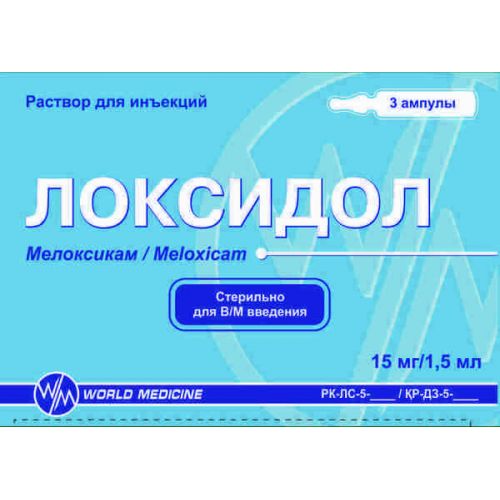
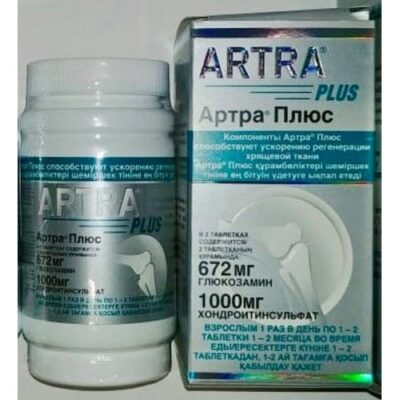
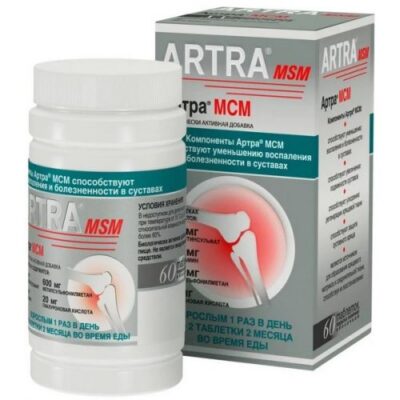
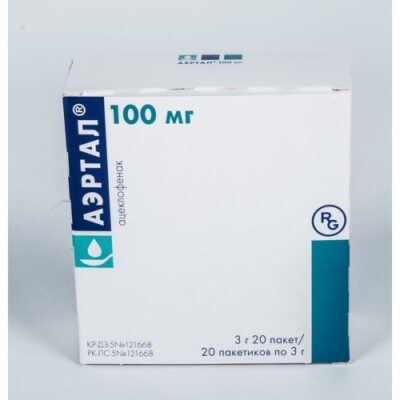
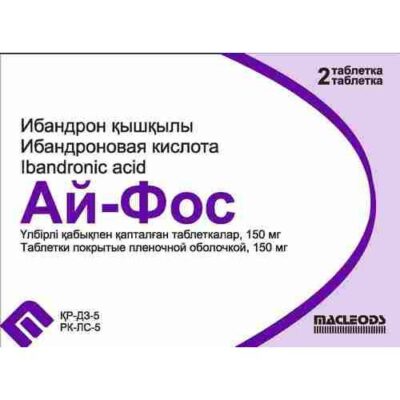
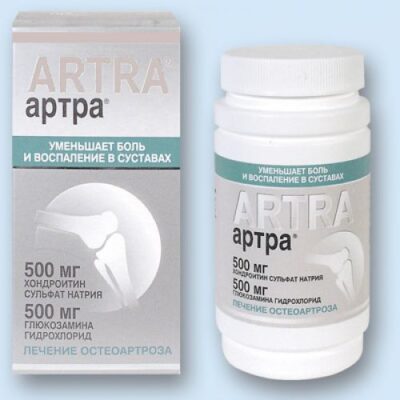
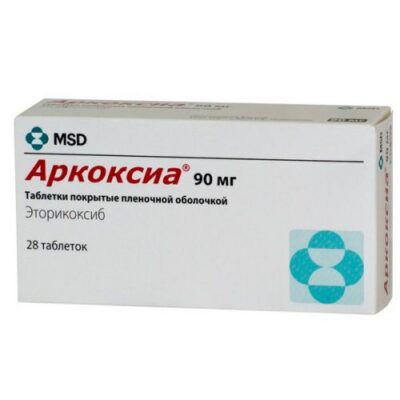
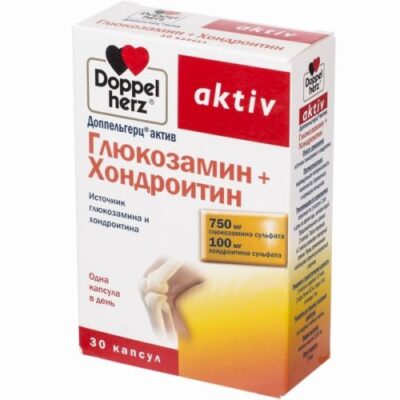
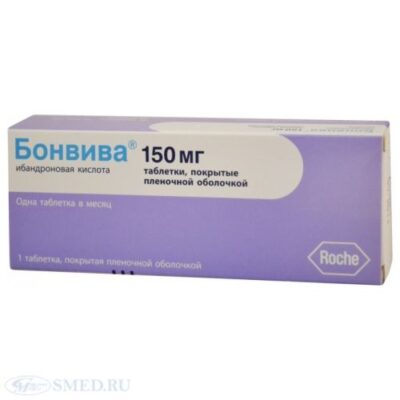
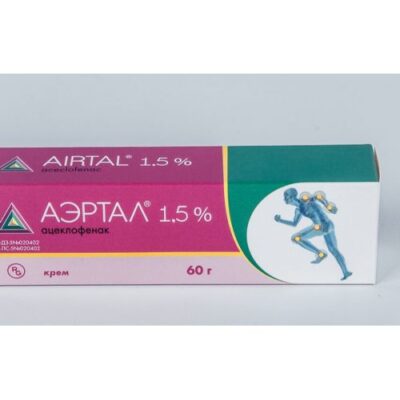






Reviews
There are no reviews yet.